#scallop fossil
Explore tagged Tumblr posts
Photo

Fossil Pectin Shell – Eocene Epoch, Clallam Bay Washington USA, Genuine Bivalve Specimen
A well-preserved Fossil Pectin Shell (scallop) from the Eocene Epoch, approximately 40–50 million years old. This specimen was collected from the Clallam Formation near Clallam Bay, Washington State, USA, a site known for producing beautifully preserved marine invertebrate fossils from the early Paleogene period.
Pectin shells belong to the family Pectinidae, a group of marine bivalves distinguished by their fan-shaped, radially ribbed shells. This fossil showcases the elegant symmetry and surface ribbing typical of this family, preserved in fine-grained sediment.
Fossil Type: Bivalve (Scallop) Shell
Geological Age: Eocene – Ypresian to Lutetian Stages
Formation: Clallam Formation
Depositional Environment: The Clallam Formation was deposited in a shallow marine environment along a continental shelf. Calm conditions and fine silts contributed to the exceptional preservation of molluscs, echinoderms, and other invertebrates in the fossil record.
Morphological Features:
Distinct fan-shaped shell outline
Radiating ribs across the surface
Some specimens retain hinge or growth lines
Notable:
Classic marine invertebrate from the Eocene of the Pacific Northwest
Ideal for educational displays, fossil collectors, or palaeontology enthusiasts
The photograph shows the exact item offered for sale
Authenticity: All of our fossils are 100% genuine natural specimens and come with a Certificate of Authenticity. Please refer to the scale image for exact size – each square or cube equals 1cm.
This Eocene Pectin shell from Clallam Bay offers a glimpse into the marine ecosystems of ancient Washington. A beautiful and scientifically valuable specimen for any fossil enthusiast.
#Pectin fossil#fossil bivalve shell#Eocene fossil USA#Clallam Bay fossil#scallop fossil#marine fossil shell#Washington State fossil#Pectinidae fossil#genuine fossil specimen#collector fossil shell#Eocene bivalve#fossil clam#authentic fossil scallop
0 notes
Text
4 YEARS.
4 YEARS OF SEARCHING. OF FINDING SMALL FOSSILS AND CLUSTERS. OF DIGGING FOR HOURS. OF NEARLY FALLING OFF TOO MANY CLIFFS INTO THE OCEAN. OF BLOODY FINGERS AND BRUISED FEET.

I did it! I found him! :D
#my partner surprised me with a coastal getaway#dude saved for months so we could do something nice#went fossil hunting at the usual spot and FINALLY I GOT ONE OF THEM LARGE ASS PREHISTORIC SCALLOPS#this was the coolest thing that's happened in a LONG time!!!!#its not complete but its better than nothing!#calling him “chip”#i love fossil hunting#i couldn't go to school to be paleontologist so this is the next best thing
12 notes
·
View notes
Text

Accumulation of scallops on gangue, Miocene (around 20 million years old, Lacoste Quarry, France.
16 notes
·
View notes
Text
#2489-2495 - A Scoopful of Scallops



Pecten novaezelandiae, Phailopecten marwicki, Mesopeplum crawfordi, Phailopecten triphooki, Phailopecten thompsoni, Pecten novaezelandiae marwicki, and Pecten novaezelandiae tainui.
One of the advantages of the outstandingly preserved sequence of marine sediments now exposed along the coastline between Hāwera and Whanganui, especially with the nicely datable layers of volcanic ash added whenever the Taranaki volcano and its predecessors went bang, is that you can trace the evolution of scallop species over millions of years.
Whanganui Regional Museum, New Zealand
2 notes
·
View notes
Text
Not anything special, maybe when I go back out I’ll get smthn better. But here are three rocks I found (the rectangular one might be part of a jawbone but idk yet so I won’t it is/isnt)

So pretty much some weird looking rocks
5 notes
·
View notes
Text
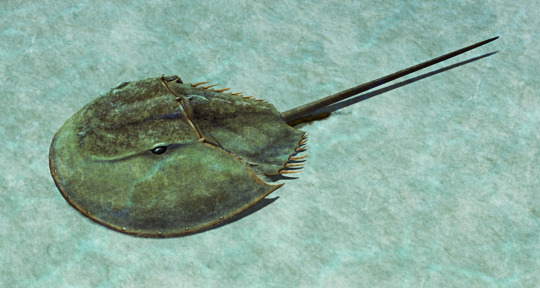
Tachypleus syriacus was a horseshoe crab from the late Cretaceous (~100-95 million years ago) of what is now Lebanon.
Closely related to modern tri-spine horseshoe crabs, it displayed a similar level of sexual dimorphism. Females grew to at least 25cm long (~10"), with rounded front edges to their carapaces and shorter rear spines, while males were around 30% smaller with a scalloped shape to the front of their carapaces.
One recently described female specimen also preserves distinctive nodules around the rim of its carapace, which may represent some sort of sensory structure.
This particular specimen is also unique for preserving a coprolite in the process of being expelled from the horseshoe crab's body – that's right, it died while pooping.
———
NixIllustration.com | Tumblr | Patreon
References:
Bicknell, Russell DC, et al. "A unique example of the Late Cretaceous horseshoe crab Tachypleus syriacus preserves transitional bromalites." Alcheringa: An Australasian Journal of Palaeontology (2024): 1-6. https://doi.org/10.1080/03115518.2024.2348748
Bicknell, Russell DC, et al. "On the appendicular anatomy of the xiphosurid Tachypleus syriacus and the evolution of fossil horseshoe crab appendages." The Science of Nature 106.7 (2019): 38. https://doi.org/10.1007/s00114-019-1629-6
Lamsdell, James C., and Scott C. McKenzie. "Tachypleus syriacus (Woodward)—a sexually dimorphic Cretaceous crown limulid reveals underestimated horseshoe crab divergence times." Organisms Diversity & Evolution 15 (2015): 681-693. https://doi.org/10.1007/s13127-015-0229-3
#science illustration#paleontology#paleoart#palaeoblr#tachypleus syriacus#limulidae#xiphosura#chelicerata#arthropod#invertebrate#art#what a way to go
166 notes
·
View notes
Text
Round 2 - Mollusca - Bivalvia




(Sources - 1, 2, 3, 4)
Bivalvia is a class of molluscs whose bodies are enclosed by a pair of half-shells called valves, though some bivalves, like the Naked Clam (Chlamydoconcha orcutti) (image 2) have secondarily lost their shells. Bivalves have no head and no radula. Their gills have evolved into ctenidia, specialised organs for feeding and breathing. Bivalvia includes the clades Heteroconchia, Palaeoheterodonta, Protobranchia, Pteriomorphia, and animals commonly known as clams, oysters, cockles, mussels, and scallops.
Bivalves live in marine and freshwater environments. Most are filter feeders that bury themselves in sediment, lie on their side on the seafloor, or attach themselves to rocks or other hard surfaces. Some bivalves, such as scallops and file shells, can swim (see gif below). Shipworms bore into wood, clay, or stone and live inside these substances. Bivalve shells are composed of two calcareous valves joined along one edge by a flexible ligament that, usually in conjunction with interlocking "teeth" on each of the valves, forms the hinge, allowing the animal to open and close its shell. The animal secrets its shell from lobes on its mantle. They have a foot located at the front of their shell and two siphons in the back, which inhale and expell water. The shipworms, of the family Teredinidae, have elongated bodies but tiny, reduced shell valves, which function as scraping organs that permit the animal to dig tunnels through wood. Bivalves have sensory organs located on the margins of their mantle, usually mechanoreceptors or chemoreceptors, sometimes on short tentacles. All bivalves have light-sensitive cells that can detect a shadow falling over the animal, some have simple eyes on the margin of the mantle, and scallops have complex eyes with a lens, a two-layered retina, and a concave mirror. Most bivalves are filter feeders, using their gills to capture particles of food such as phytoplankton from the water. Protobranchs feed in a different way, scraping detritus from the seabed with mucus-covered tentacles. A few bivalves, such as the Granular Poromya (Poromya granulata), are carnivorous, eating larger prey like small crustaceans, though they will also scavenge. It does this though its inhalant siphon which is modified into a cowl-shaped organ, sucking in prey, and then inverting to bring the prey within reach of the mouth.
Most bivalves have separate sexes, though some are hermaphroditic. Fertilization is external in most species. Spawning may take place continually or be triggered by environmental factors such as day length, water temperature, or the presence of sperm in the water. Eggs hatch into free-swimming, planktonic trochophore larvae. These later develop into veliger larvae which settle on the seabed and undergo metamorphosis into adults. In some species, such as those in the genus Lasaea, females draw sperm in through their inhalant siphons and fertilize their eggs inside their bodies. These species then brood the young inside their mantle cavity, eventually releasing them into the water column as veliger or glochidia larvae or as crawl-away juveniles. The juveniles of freshwater bivalves will attach themselves parasitically to the gills or fins of a fish host. After several weeks they drop off their host, undergo metamorphosis and develop into adults on the substrate.
Bivalves first appear in the fossil record in the Early Cambrian. Possible early bivalves include Pojetaia and Fordilla, though these are probably stem-bivalves. True Cambrian bivalves may include Camya, Arhouriella, and Buluniella. Bivalves began to diversify during the Early Ordovician. By the Early Silurian, gills were adapting for filter-feeding, and during the Devonian and Carboniferous periods, siphons first appeared along with the newly developed muscular foot. At this point Brachiopods were still the most dominant filter-feeders in the ocean, but the Permian–Triassic extinction event hit both brachiopods and bivalves hard, but resulted in bivalves becoming the more common filter-feeders by the Triassic Period.
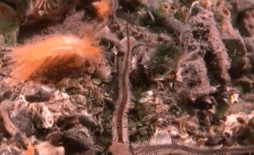
(source)
Propaganda under the cut:
Bivalves have long been a part of the diet of coastal and riparian human populations. Oysters were cultured in ponds by the Romans, and mariculture has more recently become an important source of bivalves for food.
Pearl Oysters (the common name of two very different saltwater and freshwater families) are the most common source of natural pearls.
Some of the species in the freshwater mussel family Unionidae (commonly known as Pocketbook Mussels) have evolved an unusual reproductive strategy. The female's mantle protrudes from the shell and develops into an imitation small fish, complete with fish-like markings and false eyes. This decoy moves in the current and attracts the attention of real fish. When fish approach for a closer look the mussel releases huge numbers of larvae from its gills, dousing the inquisitive fish with its tiny, parasitic young. These glochidia larvae are drawn into the fish's gills, where they attach and trigger a tissue response that forms a small cyst around each larva. The larvae feed on the tissue of the fish within the cysts. After a few weeks they release themselves from the cysts and fall to the stream bed as juvenile molluscs.
One genus, Entovalva, are parasitic as adults, being found only in the esophagus of sea cucumbers. They attach themselves via byssal threads to the host's throat, filter-feeding from the sediment sucked in by the sea cucumber. (This does not hurt the sea cucumber.)
The largest bivalve is the Giant Clam (Tridacna gigas) which can weigh over 200 kilograms (440 lb), measure as much as 120 cm (3.11 ft) across, and have an average lifespan in the wild of more than 100 years.
The shells of bivalves are used in craftwork, and the manufacture of jewellery and buttons.
As filter-feeders, bivalves are natural water filters. A single 5.08 cm (2 inch) clam can filter up to 10-12 gallons of seawater a day. They can even filter microplastics out of polluted water.
When they live in polluted waters, bivalves have a tendency to accumulate substances such as heavy metals and persistent organic pollutants in their tissues. This is because they ingest the chemicals as they feed but their enzyme systems are not capable of metabolising them and as a result, the levels build up. This may be a health hazard for the molluscs themselves, and is one for humans who eat them. It also has advantages in that bivalves can be used in monitoring the presence and quantity of pollutants in their environment.
The farming of bivalves is more ecologically-friendly than the farming of chordates as, rather than create waste, bivalves like mussels and oysters actually clean the water.
Scallops have beautiful eyes:

(source)
81 notes
·
View notes
Text

I don't know why this interaction is sending me rn, i don't follow either one of these people, but for some reason I can't stop laughing. Blue found a fossilized scallop and posted a photo and Carla didn't like that I guess
73 notes
·
View notes
Text

🐚 My Shell List for Ocean Witchcraft
very long!
Cowrie Shell -- Prosperity, fertility, feminine energy, wealth - where to collect: Africa, Indian Ocean beaches
Scallop Shell -- Journey, pilgrimage blessings, protection - where to collect: Atlantic beaches (USA, Europe)
Conch Shell -- Call to spirits, awakening inner power, amplifying voice - where to collect: Caribbean, warm tropical beaches
Sand Dollar -- Spiritual rebirth, peace, trust in universal cycles - where to collect: Mexico, Florida, tropical sandy shores
Murex Shell -- Royalty, sacredness, defense magic - where to collect: Mediterranean, Indo-Pacific
Olive Shell -- Grace, smooth paths, grounding wishes - where to collect: Southeastern US, Australia
Auger Shell -- Psychic defense, focus, clarity - where to collect: Indo-Pacific, Florida, warm beaches
Wentletrap Shell -- Spirit communication, delicate energy, accessing dreams - where to collect: Shallow waters, Southeast Asia
Babylon Shell -- Abundance, rootedness, wisdom of ancestors - where to collect: Persian Gulf, India, Philippines
Triton’s Trumpet -- Powerful protection, summoning sea spirits, strength - where to collect: Indo-Pacific reefs, coral-heavy shores
Limpet Shell -- Adaptability, steady progress, emotional protection - where to collect: Rocky shores, tide pools worldwide
Nerite Shell -- New beginnings, resisting negativity, safe travels - where to collect: Caribbean, Florida, Indo-Pacific
Moon Snail Shell -- Intuition, hidden wisdom, psychic dreams - where to collect: Pacific Northwest (USA), colder beaches
Top Shell -- Personal growth, creativity, positive flow - where to collect: Mediterranean, Caribbean
Turritella Shell -- Ancient memory, ancestral connection, earth-sea balance - where to collect: Fossil beds, warm shallow waters
Sundial Shell (Architectonica perspectiva) -- Cosmic connection, time magic, spiraling growth - where to collect: Indo-Pacific, sandy shallow areas
Helmet Shell (some of my favorites!) -- Courage, spiritual shielding, warrior energy - where to collect: Indo-Pacific, Caribbean
Volute Shell -- Love, devotion, honoring vows (Great gift for your partner <3) - where to collect: Warm waters, Indian Ocean
Paper Nautilus (Argonaut Shell) -- Creativity, femininity, magical flight - where to collect: These are rarer than most, and they float! Mediterranean, Australia
Angel Wing Shell -- Fragile beauty, spiritual awakening, connection to dreams - where to collect: Gulf of Mexico, Florida, Caribbean
Slipper Limpet -- Subtle healing, balance between giving and receiving - where to collect: European and East Coast shores
Donax Shell (Coquina) -- Energy shifts, playfulness, social magic - where to collect: Southeastern USA beaches
Cockle Shell -- Friendship, love, carrying home’s blessings - where to collect: European beaches, Atlantic shores
Pheasant Shell -- Endurance, adaptability, balance of inner and outer selves - where to collect: Australia, New Zealand, Pacific beaches
Spindle Shell -- Manifestation of goals, swift change, ambition - where to collect: Indo-Pacific region, tropical beaches
Marginella Shell -- Financial luck, small blessings, quick positive changes - where to collect: West Africa, Indian Ocean
Ark Shell (clam) -- Courage to face emotional challenges, opening the heart - where to collect: East Coast USA, Gulf of Mexico
Cat’s Eye Shell (Operculum) (My favorite!!!) -- Spiritual gateway, protection during astral travel - where to collect: Washed up with dead shells (Sri Lanka, Australia)
Button Top Shell -- Inner balance, softening harsh emotions, emotional maturity - where to collect: Caribbean, Indo-Pacific
✨ Tips for Collecting Shells
Respect local laws: Some places protect shells, corals, and marine wildlife! Always check if it's okay to take them.
Ethical gathering: Only take empty, dead shells (never with a creature still inside).
Cleanse shells: Wash gently with water and sea salt before using them in spells or altars.
🐚 Shell Magic Ideas
Use cowrie shells in money bowls.
Sand dollars are amazing for transformation rituals.
Conch shells can be used as literal horns to call spirits or start a ritual.
Tiny auger shells make great protection charms to wear or carry.
Paper nautilus shells (if you can find one!!) are perfect for creativity and dream weaving magic.
other sites to use: Shelling tips , shell hunting in Texas , Where and when to find shells
Note: some shells match certain moon phases! Do extra research before using, and make sure the ones you're taking aren't still alive or home to a hermit crab! that can be a miniature trouble! especially if the snail inside is possibly poisonous or venomous.
#shells#sea shells#seashells#aquatic#pagan witch#witch#witch community#witchblr#witches#witchy#witchcraft#witchy vibes#wicca#wiccan#pagan#witches of tumblr#sea witch#ocean witch#ocean witchcraft#ocean water#ocean world#ocean shells#where to find#seashell#Sand dollar#tips#cowrie#scallop#conch#sealife
29 notes
·
View notes
Note
have you ever thought about shelled sea animals and like how they feel to get washed up on shore like. imagine being in your shell about it. imagine the many eyes of a scallop tuned to recognising motion and ocntrast seeing things move unusually. imagine all your ways of motion working poorely. is this clear do you understand. its like a different world that you sometimes have to go to where everytthing is different and there might be things that can kill you
ive been sitting on this ask for a month falling in love with it yes i understand its so clear i understand. and maybe its terrifying but what if it’s not what if it happens every day. what if it’s like children who roll down a grassy hill over and over just to feel a the world spin, laughing at the way all the careful attunements of their senses are left unmoored…sight, flickering like a sped-up film mostly between green and sky-blue, and sound, muffled by grass tickling their ears, and balance, whooshing laundromats whir pooling still ponds of endolymph, green leaf volatiles overwhelming their noses as the earth whispers out against being crushed, waves of dew and itchiness, their skin stained green, limbs criss-crossed with indentations, the momentary transformation of an animal into an afterimage, what the act of play, sometimes, has always been about, a glimpse into a world where nothing is the same… but i think you’re right also, and i understand, it must be like the terrifying whoosh of my heartbeat in my ears, deafening everything else, that blows through me when i sit up too fast and my vision goes black, but everywhere, your whole body pulsing, flipping over in the water, not drowning, just inside a labyrinth of pure hedge, with nothing passable; the water in which you live no longer swimmable, the barnacles made into fish, lost, the fish, pinned under rocks, helplessly waving their mouthless tails, filtering nothing, processing everything as critical information and getting no clear picture, not so much in a strange place as having entered into something so disorienting it doesn’t where you are and only what remains of you—there is never any moment where you can say that you crossed border between your world or the next. you simply were, and then you were tumbled, tossed, eroded, washed clean, caught, deposited, buried, fossilized, swallowed hole, spit out, and freed….. then prodded by sunburned children that might hurt you, intentionally or unintentionally, and will certainly take you away forever, beg to keep you, love you, and then forget about you, sunburned, wide-eyed, happy children still smelling of cut grass
#anon im obsessed with you forever#anon#z#notebook#fav#back from where no one lives#i run it like a crop of kismet
60 notes
·
View notes
Text






Shell Haul
Atlantic bay scallops, calico scallops, baby’s ear snail shells, cayenne keyhole limpets, lettered olive, shark eye moonshell fragments, Atlantic auger shells, common jingles, small eastern oysters, pen shell fragment, eastern banded tulip shell fragment, Atlantic coquinas, cross-hatched lucines, fossilized shark teeth and fragments.
Cross-barred venus clams.
Cross-barred venus clams.
Cross-barred venus clams, common Atlantic slipper snail shells, arc shells (turkey wing and moss).
Arc shells (turkey wing and moss), southern ocean quahog venus clams, soft-shelled clams, eastern oysters, Atlantic giant cockles, assorted small arcs and cockles.
Atlantic giant cockles and fragments, assorted small arcs and cockles, soft-shelled clams, lightning whelk fragments, pear whelk fragment, assorted coral fragments, scotch bonnet fragments, worn and textured shell fragments (quahog, arc).
[All shells were responsibly collected, most to be used in or with art.]
#sea shells#pottery#bc a lot of em are a personal stash for wood kiln firings!#i identified these to the best of my ability but there are most likely some errors
37 notes
·
View notes
Text

Fossil Friends! 🦴🦖
🌲🐿️🌲🌲
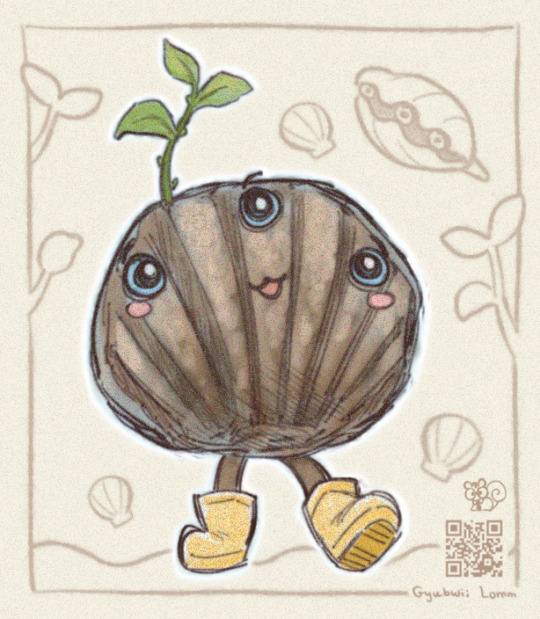
Little Scallop 🐚🌱
🌲🐿️🌲🌲
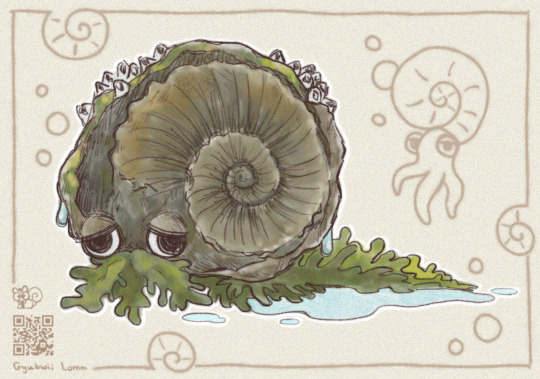
Mr Ammonite 🦑🐚
🌲🐿️🌲🌲

Doggy Tiktaalik 🐟🐕
🌲🐿️🌲🌲
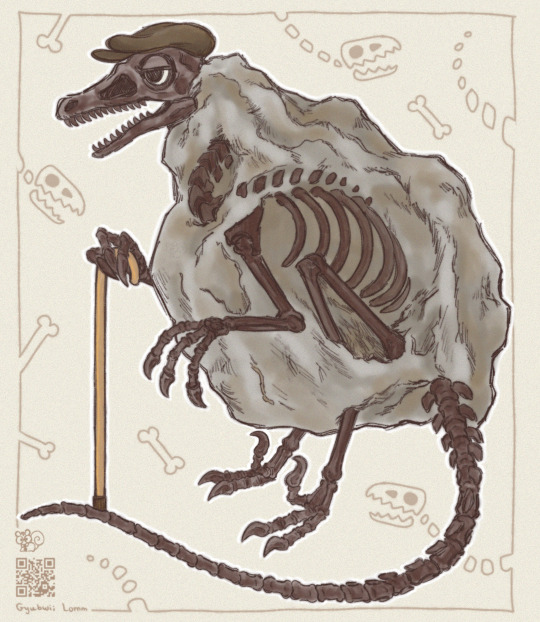
Grandpa Velociraptor 🦖👴
🌲🐿️🌲🌲
10 notes
·
View notes
Text

✦ FOSSILCHARIC ! ✦
✧ [ alt name : fossilobjectifiedcharic ! ]
pt: fossilcharic, alternative name fossilobjectifiedcharic. end pt.
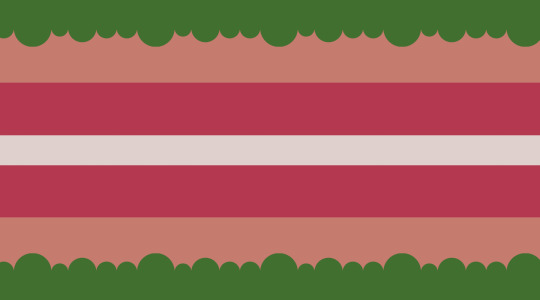
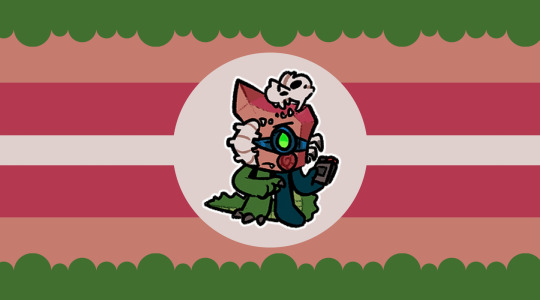

☆ ‿‿ definition : a gender that is related to, connected to, described by, has the same vibes as, or simply is fossil from objectified ( comic ) ! there is no wrong way to interpret this term !
pt: definition, a gender that is related to, connected to, described by, has the same vibes as, or simply is fossil from objectified (comic). there is no wrong way to interpret this term. end pt.
Charic template I used here.
Flag IDs under cut

[normal flag id: a rectangular flag with seven horizontal stripes. the top and bottom stripes are scalloped, the bumps varying in size. the rest of the stripes are straight, and mostly even, although the middlemost stripe is slightly thinner. the colors of the stripes, from top to bottom, are as follows: forest green, desaturated orange, reddish-pink, pale beige, reddish-pink, desaturated orange, and forest green. there is a pale beige circle in the centre of the flag, with an image of fossil from objectified in the centre of the circle with a white outline surrounding it. end id.]
[simplified flag id: a rectangular flag with seven horizontal stripes. the top and bottom stripes are scalloped, the bumps varying in size. the rest of the stripes are straight, and mostly even, although the middlemost stripe is slightly thinner. the colors of the stripes, from top to bottom, are as follows: forest green, desaturated orange, reddish-pink, pale beige, reddish-pink, desaturated orange, and forest green. end id.]
3 notes
·
View notes
Photo


a few more fossil molluscs from NZ, that @purrdence found at a B&B on the Fossil Coast. Unfortunately she didn’t ask exactly where the owner had found them, so narrowing down an ID is beyond me, beyond two scallops and what might be a brachiopod.
14 notes
·
View notes
Text
Why The Italian City of Lecce Is Nicknamed 'The Florence of The South'
Rich in honey-hued basilica's and elaborately decorated baroque cathedrals, the Southern Italian city of Lecce is often regarded as the 'Florence of the South'.
— By Angela Locatelli | October 5, 2024

The construction of Basilica di Santa Croce took over 140 years to complete, boasting a grand facade. Photograph By Francesco Lastrucci
It’s not easy to carry a basilica on your shoulders, but, despite the summer heat, these men aren’t breaking a sweat. Carved into the honey-hued exterior of the Basilica di Santa Croce, the stone figures kneel in a line from one side of the wall to the other, seemingly supporting the upper facade with their bare hands. Above them, the building is so richly decorated as to seem in motion: cherubs swirl in a spiral and garlands of pomegranate and acanthus leaves rise, reaching fever pitch where they all circle the central rose window. “Construction began in 1549,” says local guide Anita Maggiulli. “But it took over 140 years to complete.”
It seems to have been worth it, as the church has become the symbol of the city. I’m on a half-day tour of Lecce, the biggest urban centre of Salento, the tip of the heel to the Italian peninsula’s boot. It’s an area that distils what the wider region of Puglia is known for: white-washed hamlets, long stretches of sandy beach and the crystal-clear waters of the Ionian and Adriatic Seas. But this city in the hinterland has a different claim to fame — its grand, expertly carved architecture, which has earned it the moniker ‘Florence of the South’.


Baroque paintings frame the interior of Lecce Cathedral, located within the Piazza del Duomo (Left). In Lecce's city centre, many shops can be found selling local specialties (Right). Photographs By Francesco Lastrucci
According to Anita, while the nickname is often associated with German historian Ferdinand Gregorovius, it was first thought up by George Berkeley, an Irish bishop who travelled through Puglia in the 18th century. At a time when the Italian south was seen as unsafe and lawless, he reached the peripheries and found a city with protective walls, some 140 churches and, above all, magnificent facades. “He was left… disconcerted,” Anita says, mimicking a mix of surprise and confusion. “He described it as a place that had nothing to envy Rome or Venice, and even resembled a small Florence.”
If the Tuscan capital had been the cradle of the Renaissance, Lecce came to exemplify the Baroque era. The opulent art form originated in Rome in the 17th century, when the Vatican fought the threat of Protestantism the way it knew best — through an ostentatious display of power. As the style spread southward, it took on a local twist. “We couldn’t play with dimensions like the Romans, nor employ prestigious materials like the Neapolitans,” says Anita. “But we’d been blessed with a ‘poor’ material that allowed us to create marvels: Lecce stone.”

The former Hospital of the Holy Spirit is made out of Lecce stone. Photograph By Francesco Lastrucci
When it comes to this type of limestone, there are three key takeaways: it’s extracted in quarries around Lecce; it once formed the bed of an ancient sea, and to this day, you can find shells and fossils caked in its slabs; and it’s so malleable, it can be carved with a penknife. “It’s as soft as mollica,” says Anita, comparing it to the interior of a bread roll, as we move away from Santa Croce. “It became the defining characteristic of the Lecce Baroque.”
The city centre is almost entirely tinted in the stone’s characteristic warm, off-white shade. And while the Baroque approach was initially reserved for churches and mansions, large swathes of the city came to be rebuilt in its style. Locals wander around, unaffected by the open-air museum on display above their heads: the window lintels carved with scallop shells; the doorways flanked by Corinthian-style pillars; the balconies with stately balustrades.
Over the past 30 years, local artisans have started experimenting with a more modern approach to stonemasonry, too. One of the first was sculptor Renzo Buttazzo, now in his 60s, who greets me the next morning outside his home-turned-studio on the outskirts of San Cesario, a 10-minute drive from Lecce.
“Hot, eh?” he says in his garden by way of greeting, tugging at his grey linen shirt to fan himself. “I hold stonemasonry workshops here, to show visitors there’s more to Salento than sun and sea,” he tells me. “If you want to truly get to know the area, you must meet the people who built it up.”

Within his San Cesario workshop, sculptor Renzo Buttazzo experiments with modern stonemasonry techniques. Photograph By Angela Locatelli
Here, he builds, both figuratively and literally. At the far end of the garden, there’s a small exhibition space for his Lecce stone works. The ceiling is see-through; the daylight washes down on his sculptures, displayed on wooden pedestals all around the walls. There are sinuous figures with neither face nor features, and molecular-like forms that seem to contract and expand, with no angles or hard lines, no beginnings or ends. They’re a study in oxymorons: something solid that seems soft, something heavy that looks feather-light.
When describing his approach to working with Lecce stone, Renzo uses the word sconvolgere, an Italian verb for the act of shaking something out of its status quo. In the early 1990s, when artisans still used the material to sculpt angel-like putti and seraphim, Renzo was turning it into everyday objects, like clocks and lamps, before progressing to abstract sculpture. In 2001, he was honoured with the Order of Merit of the Republic, the Italian equivalent of being knighted.
“I take the old — the Baroque — to create the contemporary,” Renzo tells me as he flip-flops back outside in battered sandals, his soles chalk-white from the stone residue dusting the floor. “We local stonemasons come from a long legacy of excellence, and we have a duty to carry it forward. Our predecessors built something as magnificent as Santa Croce with their hands. Four centuries on, I work the same way.”
He reaches his workstation, a table on a covered patio surrounded by scattered tools, and turns his attention to a work in progress. He positions a wooden scalpel, then hits it with a hammer to sculpt sections from the undulating, hollow figure. A rasp is used to model its curves; sandpaper to shave its surface smooth. “Sometimes I’m here for 10 hours a day, and I come away exhausted,” he says, eyebrows furrowed, taking a step back to size up his efforts. “It’s not easy, you know — gifting people beauty.” And yet, as his face softens, pleased by the results, all I can think is how easy he makes it look.
3 notes
·
View notes
Text
Limelanche!

[ID: A picture of a tall monster made of various layers of limestone, themed after Cragalanche from Kid Icarus: Uprising. They have green eyes as well as a green scallop fossil print under their mouth. /end ID]
My beloved cragsona! She’s got fossils, she’s got layers, she’s truly got it all. I honestly want cragsonas to become a thing in the fandom. We need to build mountains of these guys.
20 notes
·
View notes